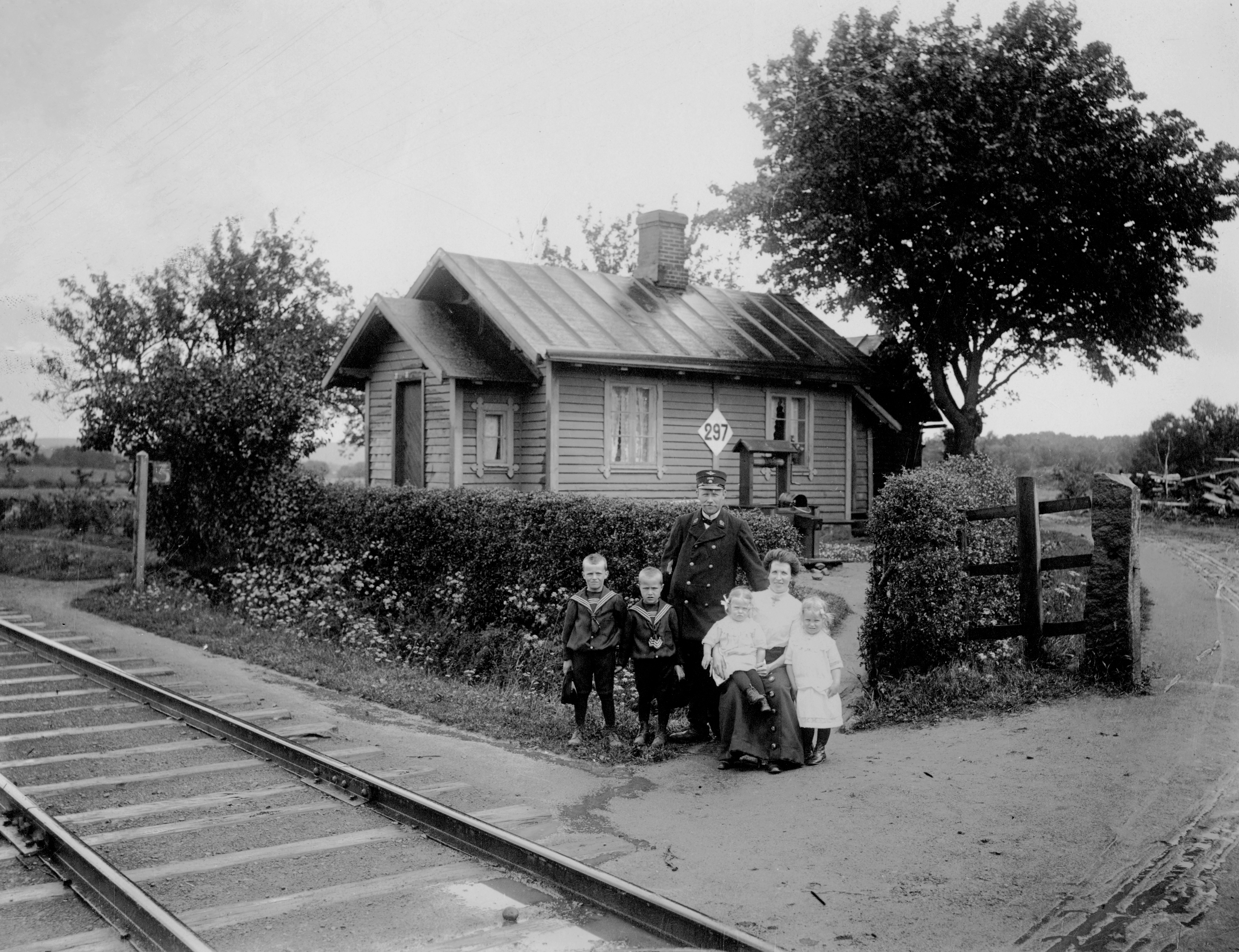Lengthsman
The lengthsman were responsible for ensuring that trains could safely travel along the track. When the railways came into use in Sweden, they needed to be maintained and monitored. Special staff were hired to do this, called lengthsman.
The lengthsman’s duty was to inspect an assigned stretch of track, fix any problems and report any deficiencies to the nearest line overseer. Problems that could arise included frost heave, broken rails or sun kinks. Obstacles such as fallen trees or boulders also had to be dealt with. The lengthsman also inspected telegraph lines and signals along the track.
Maintenance, ballasting, wedging and tamping
In addition to inspecting the track, the lengthsman was also responsible for a great deal of maintenance work. During the summer, the lengthsman replaced sleepers, replaced broken rail joiners, and repaired gates and fences along the track. To ensure the rails were properly positioned, the lengthsman performed what was known as ballasting, wedging and tamping. The lengthsman was also responsible for keeping unauthorised people away from the track. Only those who were issued a “track-walking ticket” (gångbiljett) were allowed to walk along the track. This was done at one’s own risk, as explicitly stated on the ticket.
SJ’s regulations from 1858 included something known as posting, which involved giving an all-clear signal at a predetermined location. To give this signal, the lengthsman held a rolled-up signal flag in his hand vertically along his upper body.
Day and night watch
Track inspection took place before and after the passing of each train. The lengthsman also had to watch the trains as they passed. If he noticed any problem, the lengthsman signalled the train to stop using his signal flag, or a signal lamp if it was dark.
Night watch was introduced in 1873 when Statens Järnvägar began running night trains between Stockholm and Malmö and between Stockholm and Gothenburg.
The various regulations issued over the years changed the number of inspections, how posting was to be done and the length of the stretch that each lengthsman was responsible for.
Posting for each train ceased as of the 1916 regulations. The lengthsman then only had to give the all-clear signal if he was at the track when the train passed. As of 1923, posting was no longer included in the regulations.
The Lengthsman system ends
The lengthsman system existed until the early 1960s. The name lengthsman (banvakt) was changed to fettler (banbiträde) and then later to rail track maintenance workers (banarbetare). Instead of lengthsmen being posted along the line, rail track maintenance workers were posted in major areas and set out from there to perform inspections and maintenance work along the track.

Lengthsman's cottage, 1870's model.